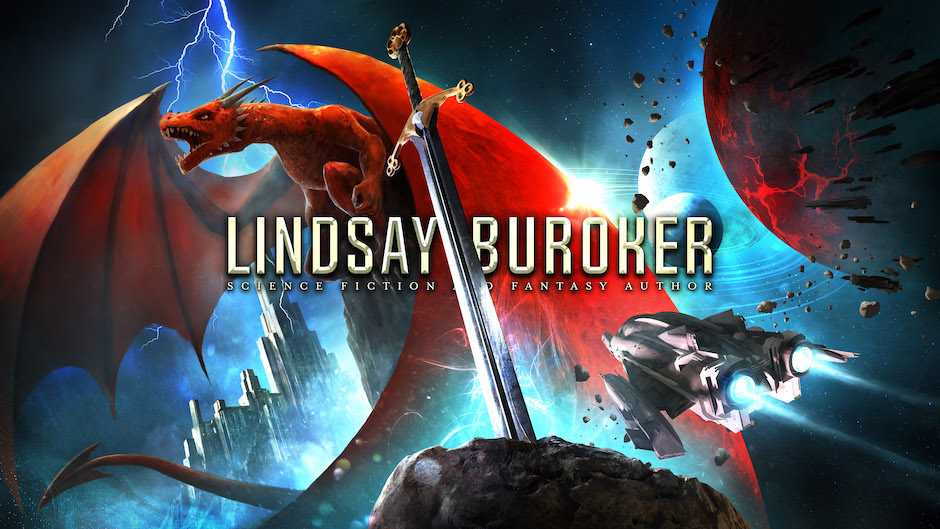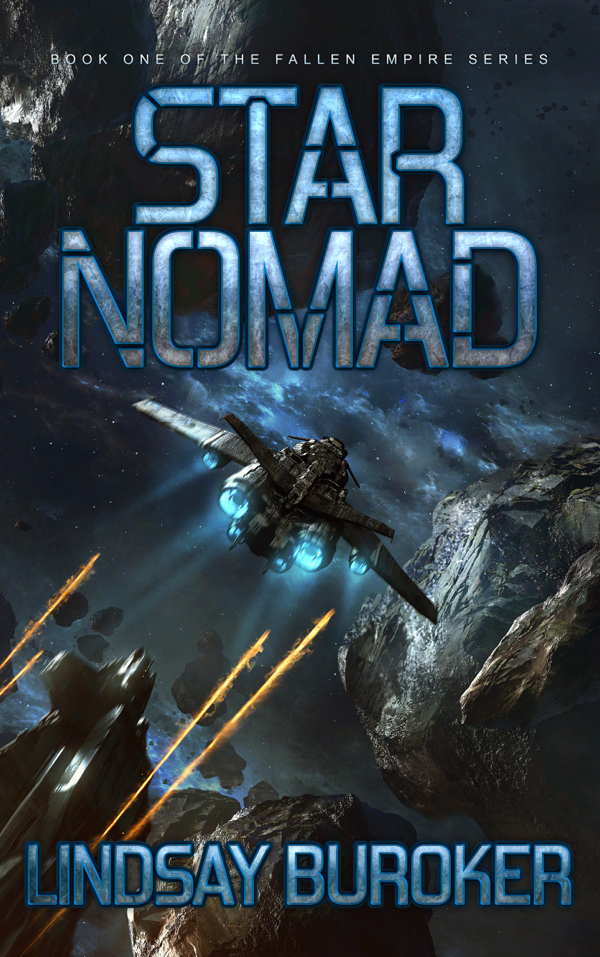 Most of us who decide to self-publish have to handle the ebook creation, book blog tours, social media marketing, and just about everything else ourselves. Sometimes, though, you get lucky and you have a husband, wife, or significant other to help with all the work. Today we have a guest post, a “self-publishing checklist” from Rose Andrade, who is out in the blogosphere helping promote her husband’s new sci-fi/fantasy novel, Bleedover.
Most of us who decide to self-publish have to handle the ebook creation, book blog tours, social media marketing, and just about everything else ourselves. Sometimes, though, you get lucky and you have a husband, wife, or significant other to help with all the work. Today we have a guest post, a “self-publishing checklist” from Rose Andrade, who is out in the blogosphere helping promote her husband’s new sci-fi/fantasy novel, Bleedover.
I’m not sure if she has a website of her own, but if you like what you see, you should be able to contact her through Curtis’s site or the blog that they maintain together. I am sure that she’d be tickled if you checked out Curtis’s book. It’s a 99-center for now. They’re also running a $5o-gift-card “blog tour giveaway,” so be sure to check that out as well.
A Checklist for Self-Publishing
Many authors are deciding to self-publish their novels. And often, along with the excitement of that decision comes an overwhelming feeling of everything that needs to be done: create covers, edit manuscripts, formatting, creating web platforms, participate in social media, etc. The list is so huge it nearly made me give up before even starting. Now, a few months later, I realized there’s no need to run and hide. It may be scary at first, but it’s doable. Here’s a general checklist and timeline that will help you prepare for each milestone.
What stage are you?
1) I just finished my manuscript.
If you’re here, you should be thinking and planning to:
1.1) Hire a cover designer: Your e-book cover is one of the most important promotional tools you’ll have. So make sure you have a great cover. It’s possible to design your own cover, but I’d advise otherwise unless you’re very comfortable with digital design. (There are plenty of affordable cover designers on the market.)
Duration: 4-5 weeks. Plan to spend a week or two quoting and negotiating with designers. They’ll ask you for two weeks to get the first cover draft, one week for applying your recommended changes (if any), and another week for final approvals/receipt of final artwork.
1.2) Hire a professional editor: This is a crucial step to creating a professional e-book. Lindsay recently posted an excellent piece entitled “How editing works for independent authors” that details the types of editing services available, average costs, etc. The article is a must read that will help you make an informed decision when hiring editing services.
Duration: 5 weeks to 3 months. Allow two weeks for quoting and negotiation with editors. Once you’ve selected and hired one, depending on the scope of your project, the level of editing you’re contracting, how many rounds, and the availability of the editor—it can take anywhere from 3 weeks to 3 months to have the editing completed.
2) I just got my book professionally edited and designed.
Your product is complete, congratulations! Now you can make it live for sale, right? Wrong! There’s a whole new world you must understand.
2.1) E-book distribution channels selection: At this stage, you have to decide where and how to distribute your e-book. You can select each e-book retailer individually or use a free distributor such as Smashwords to deliver your work to e-book retailers. Some authors rely solely on Smashwords for distribution. Most authors, however, use Smashwords to reach a larger number of e-retailers, then sign-up individually with the most popular ones such as Amazon, Apple, and Barnes and Noble. They do this to have more control over the quality of the e-book design.
Duration: 1 – 2 days to make a decision on distribution strategy.
2.2) E-book retailer sign-up and manuscript formatting: You’ll have to create an account in each e-retailer of choice, as well as perform the next steps for each one. You’ll be asked to upload your formatted manuscript. Each e-retailer has specific file requirements. Check out author Curtis Hox’s guest post, “How to Generate Your First Professionally Formatted Mobi File,” to see an example of how to create a .mobi file (required for Amazon). Smashwords requires your manuscript in a .doc file with very specific formatting. They provide a guide to help you achieve a perfect file that will work with their infamous meatgrinder (although, I’ve heard they’ll start accepting .epub formats in 2012).
Duration: 1-5 days per retailer. Depending on your computer and HTML skills, formatting your manuscript and outputting the required files can take a few hours for each retailer, or weeks of frustration. If you’re not computer savvy, you can hire professionals to format and create .mobi files, .epub, files and Smashwords’ .doc files for as little as $25. Those professionals also offer packages where they’ll output multiple types of files for a set fee. Many people attempt to design Smashwords’s .doc files on their own. I’m proficient at MS Word and it took me two days in the first time. The next time, it took me six hours. If you’re not very savvy or have an e-book with lots of different font, formats, images, and boxes, I highly recommend that you hire someone who can format it for you.
2.3) Upload a formatted manuscript to e-book stores: Here you’ll “assemble” your virtual book for each retailer, which means, you’ll upload the cover artwork and the formatted file and submit for the particular e-retailer review/approval. Assuming there are no errors in your files, your product gets generated and made live fairly quickly (less than 24 hours). (If you chose Smashwords as a distributor, after your e-book is live on their site, you’ll need to submit a request for it to be included on Smashwords’ premium catalog—the catalog distributed to other e-retailers—and the approval can take up to 14 days. Once approved, Smashwords then begins delivering your e-book, which can take up to 2 weeks to complete.)
Duration: A few hours per individual retailer.
3) My book is up for sale on e-book stores of my choice.
Congratulations! Now you’re ready to create a web platform to promote your product.
3.1) Build an online platform: The first thing you should do is to build an online presence by joining social networks (Twitter, Facebook, Google +, LinkedIn, Goodreads, etc.), building a website, and/or starting a blog. * The process of creating an account on the differing social networks is simple and cost free. The creation of a site and/or a blog can be cost free, but it requires some knowledge of HTML and web design, and usage of free web templates. If you’re not savvy about web development, or want to have a more customized look to your blog, you can hire a freelance web developer to create your blog and site.
Duration: 2 – 4 weeks. Allow those weeks to focus on the creation of your blog and/or website, test your pages, build content, stylize your Facebook page, etc.
* Creating a web presence can be your first step, even before you begin writing your manuscript! Interacting with your potential readers is a great strategy to gain readership and build momentum so that when you finally publish your work, you have a group of expectant readers eager to purchase your e-book.
4) My e-book is up for sale, I’ve built my web platforms, and I want to focus on marketing
Here you’ll have to leverage all the web platforms that you’ve created to help drive sales to your e-book. This is an extensive topic that requires a whole post about it. But if I could provide only one bit of advice, it would be that you create a marketing plan. A marketing plan will help you see what strategies work, what needs improvement, and where you should focus your efforts. I have just finished my own marketing plan where I detailed goals to be reached, where I created an overall strategy, and where I listed smaller marketing actions that’ll help me achieve my objectives.
It’s also crucial that you study the market and learn from other successful writers and bloggers. Bloggers such as Lindsay Buroker and sites such as Savvy SelfPublishing will provide excellent insights.
Duration: You’ll keep at this step as long as your e-book is up for sale. It should be a constant, ongoing part of your journey as a self-published author. Marketing plans and strategies will change, grow and evolve along with your career as an independent author. Good luck!




Very good checklist. It all can be so overwhelming at first, and this helps a lot by breaking it down in manageable steps.
I agree about how important the marketing plan is. Although (ahem) it’s something I need to work on a lot more 😉
Very good checklist. I set deadlines ahead of time now, so my editors are ready for my ms to arrive.
Promotion does go on forever. I hope it eventually has an impact… 🙂
Best to you and your husband, Rose.
This was an extremely helpful and informative post. Thanks!
Thank you everyone for the kind words. I put this list together because when I first began I wished I had one. I hope our fellow authors beginning this journey can take advantage of it. And thank you Lindsay, for hosting this post, and for allowing us to connect with such great group!
Hurrah! Finally I got a webpage from where I can actually take helpful data regarding my study and knowledge.
Wow. Now this is a complete roadmap to self-publishing if I ever saw one… Brilliant post! Thanks so much for sharing!
This is basically what I came up with after a *lot* of reading. If you would have just published this a couple of months earlier it would have saved me so much time! 🙂 Seriously, it is still nice to see confirmation of the plan I thought might work.
P.S. I clicked on “marketing plan” thinking it was a link to Rose’s blog with a posted marketing plan. I know the basics/theories of marketing plans and business plans (although I have never made one.) I would *love* to see a sample marketing plan or business plan for independent publishing.
Erin, what a great suggestion. I can help. Let me work on it and I will try to have a small guide in how to build a marketing plan soon.
What a timely post! At my Toastmasters group next week (Off the Page – a group for speakers and writers) we will be holding a workshop on various avenues to publication. And of course self-publishing is on the list. This post has a ton of great information in one handy place. I would love to distribute copies of this post to the group at the meeting as a handy checklist, if that’s okay?
Hi Charlotte, thanks for the feedback on the article. I don’t have a problem with you sharing the article. However, check with Lindsay, since this post was written for her site.
thanks, Rose, will do.
It’s fine by me, Charlotte! 🙂
Pingback: Announcement: Winner of Bleedover Blog Tour Contest – $50 Amazon Gift Card | Epub World
Wow! This is such a great list. Thank you! The art of getting published these days is a rare commodity indeed. Many times, authors that are in the market of trying to get published will write umpteen query letters, send off countless chapters for initial review to agents and then receive the “Thanks, but no thanks, Don’t call us, we’ll call you” letter. Dejected and frustrated, the author pulls themselves up by the bootstraps and hones their manuscript once more, writing an even more intriguing query letter to the next agent or publisher only to get continually rejected. Neat, right?!